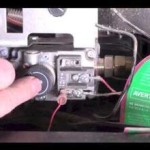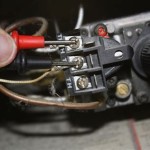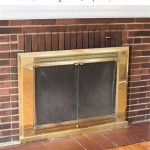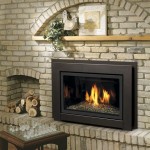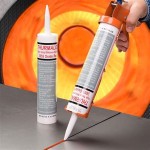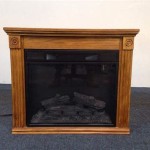Chadds Ford Fireplace: A Comprehensive Guide
Chadds Ford, Pennsylvania, is a region steeped in history and characterized by its beautiful landscapes. Homeowners in this area, recognizing the value of both aesthetics and function, often seek to enhance their properties with fireplaces. A Chadds Ford fireplace represents more than just a heating source; it's a focal point that adds warmth, ambiance, and value to a home. This article provides a detailed overview of the various aspects of fireplaces relevant to Chadds Ford residents, including types, installation considerations, maintenance, and local regulations.
Types of Fireplaces Suitable for Chadds Ford Homes
Choosing the right type of fireplace is crucial for ensuring safety, efficiency, and aesthetic appeal. Several options are available, each with its own set of advantages and disadvantages. Understanding these distinctions is essential for making an informed decision that aligns with individual needs and preferences.
Wood-Burning Fireplaces: These are the traditional fireplace option, known for their classic appeal and the unparalleled ambiance of a crackling fire. Wood-burning fireplaces rely on burning wood as their primary fuel source. They can be built from brick, stone, or a combination of materials. Installation requires a professionally constructed chimney to vent smoke and combustion byproducts safely. While offering a rustic charm, wood-burning fireplaces require careful management of fuel supply, regular cleaning to remove ash and soot, and adherence to local burning regulations, which can be influenced by air quality concerns in the region.
Gas Fireplaces: Gas fireplaces offer a convenient and cleaner alternative to wood-burning models. They are fueled by natural gas or propane and provide instant heat at the flick of a switch. Gas fireplaces come in a variety of styles, including traditional log sets, contemporary linear designs, and models that mimic the appearance of a wood-burning fire. Installation typically involves connecting to a gas line, which requires professional expertise for safety reasons. While gas fireplaces do not produce significant amounts of ash or soot, they still require regular maintenance, including inspection of the gas line and burner components. They are generally considered more environmentally friendly than wood-burning fireplaces due to their cleaner combustion process.
Electric Fireplaces: Electric fireplaces are a versatile and easy-to-install option. They do not require a chimney or venting system, making them suitable for various locations within a home. Electric fireplaces use electricity to generate heat, often with realistic flame simulations that enhance the ambiance of a room. They are available in a range of styles, from freestanding units to wall-mounted models. Electric fireplaces are relatively low-maintenance and offer convenient temperature control. While they may not provide the same level of heat as wood-burning or gas fireplaces, they offer a safe and efficient heating solution for smaller spaces. Additionally, they can be operated without generating heat, allowing residents to enjoy the visual appeal of the flames year-round.
Ethanol Fireplaces: Ethanol fireplaces utilize liquid ethanol as their fuel source, creating a clean-burning flame without the need for a chimney or venting system. These fireplaces are available in portable and stationary designs, offering flexibility in placement and style. They are often chosen for their modern aesthetic and ease of use. Ethanol fireplaces produce minimal smoke or ash, making them a relatively clean option. However, it's crucial to use high-quality ethanol fuel and to follow safety guidelines when refilling the fuel tank. While ethanol fireplaces provide a visual appeal and some heat, they are generally not considered a primary heating source.
Installation Considerations in Chadds Ford
Installing a fireplace in Chadds Ford requires careful planning and adherence to local building codes and regulations. The process involves several key considerations, including permits, safety inspections, and professional installation services. Addressing these factors ensures a safe and compliant installation that meets the specific requirements of the property.
Permits and Regulations: Before commencing any fireplace installation project, obtaining the necessary permits from the local municipality is essential. Chadds Ford Township, like other municipalities, has specific building codes and regulations related to fireplaces, including requirements for chimney construction, venting systems, and fire safety measures. These regulations are designed to protect the safety of residents and prevent potential hazards. Failing to obtain the required permits can result in fines, delays, or the need to reverse the installation. Consulting with the township's building department or a qualified contractor is recommended to understand the specific permit requirements for the project.
Safety Inspections: After the fireplace installation is complete, a safety inspection is crucial to ensure that the fireplace meets all applicable safety standards and regulations. The inspection typically involves verifying the proper installation of the chimney, venting system, gas lines (if applicable), and fire-resistant materials. A qualified inspector will also assess the overall safety of the installation and identify any potential hazards. Addressing any issues identified during the inspection is essential to ensure the safe operation of the fireplace. Regularly scheduled inspections, even after the initial installation, are recommended to maintain the fireplace's safety and efficiency.
Professional Installation Services: Due to the complexity and safety considerations involved, it is highly recommended to hire a qualified and experienced professional for fireplace installation. Professional installers have the knowledge, skills, and equipment necessary to ensure a safe and compliant installation. They can assist with selecting the right type of fireplace for the property, obtaining the necessary permits, and properly installing the fireplace according to manufacturer's instructions and local building codes. Hiring a licensed and insured contractor provides homeowners with peace of mind knowing that the installation is being performed by a qualified professional, minimizing the risk of potential hazards or costly errors.
Chimney Considerations: For wood-burning and some gas fireplaces, a properly functioning chimney is essential for venting smoke and combustion byproducts safely. The chimney must be constructed of fire-resistant materials and properly sized to accommodate the fireplace's exhaust requirements. Regular chimney inspections are recommended to identify any potential issues, such as cracks, blockages, or deterioration. Chimney cleaning is also necessary to remove creosote buildup, which can pose a fire hazard. Maintaining a clean and well-maintained chimney is crucial for the safe and efficient operation of a wood-burning fireplace.
Maintenance and Safety Practices for Chadds Ford Fireplaces
Proper maintenance and adherence to safety practices are essential for ensuring the long-term performance and safety of a Chadds Ford fireplace. Regular maintenance helps to prevent potential problems, extend the life of the fireplace, and maintain its efficiency. Following safety guidelines reduces the risk of fire hazards and ensures the well-being of residents.
Regular Cleaning and Inspection: Regular cleaning is essential for maintaining the efficiency and safety of a fireplace. For wood-burning fireplaces, this includes removing ash and soot from the firebox and chimney. Ash buildup can reduce the efficiency of the fireplace and increase the risk of chimney fires. For gas fireplaces, cleaning involves inspecting the burner components and ensuring that they are free of debris. Regular inspections of the fireplace and chimney are also important to identify any potential issues, such as cracks, leaks, or deterioration. Addressing these issues promptly can prevent more serious problems from developing.
Chimney Sweeping: For wood-burning fireplaces, regular chimney sweeping is crucial for removing creosote buildup. Creosote is a flammable substance that accumulates in the chimney as a byproduct of burning wood. If left unchecked, creosote buildup can significantly increase the risk of a chimney fire. The National Fire Protection Association (NFPA) recommends having a chimney inspected and cleaned at least once a year, or more frequently if the fireplace is used heavily. Hiring a certified chimney sweep ensures that the chimney is properly cleaned and inspected, reducing the risk of a chimney fire.
Safe Burning Practices: Adhering to safe burning practices is essential for preventing fire hazards. For wood-burning fireplaces, this includes using seasoned (dry) wood, which burns more efficiently and produces less creosote. Avoid burning treated wood, painted wood, or other materials that can release harmful chemicals into the air. For gas fireplaces, ensure that the gas line is properly connected and that the fireplace is operated according to the manufacturer's instructions. Never leave a fireplace unattended while it is burning, and always ensure that the area around the fireplace is clear of flammable materials. Installing smoke detectors and carbon monoxide detectors is essential for providing early warning of potential hazards.
Preventing Carbon Monoxide Poisoning: Carbon monoxide (CO) is a colorless, odorless, and poisonous gas that can be produced by fireplaces and other fuel-burning appliances. Installing carbon monoxide detectors in the home is crucial for providing early warning of CO buildup. CO detectors should be placed on each level of the home and near sleeping areas. Regularly testing the detectors to ensure that they are functioning properly is essential. If a CO detector alarms, immediately evacuate the premises and call emergency services. Ensuring proper ventilation and regularly inspecting and maintaining the fireplace and chimney can help to prevent CO poisoning.
Fireplace Safety Equipment: Having the appropriate fireplace safety equipment on hand is essential for responding to potential fire emergencies. This includes a fire extinguisher rated for Class A fires (ordinary combustibles) and a fireplace screen to prevent sparks from escaping. Knowing how to use a fire extinguisher and having a fire escape plan in place can help to minimize the damage and risk of injury in the event of a fire. Regularly inspecting and maintaining the fire safety equipment ensures that it is ready to use in an emergency.
By carefully considering the type of fireplace, addressing installation considerations, and adhering to maintenance and safety practices, Chadds Ford residents can enjoy the warmth and ambiance of a fireplace safely and efficiently, while also enhancing the value and beauty of their homes.

Wood Gas Electric Fireplace Chadds Ford Fireside

Wood Gas Electric Fireplace Chadds Ford Fireside

Electric S Inserts Wall Mounts Chadds Ford Fireside

Fireplace Mantels Stone Facing Chadds Ford Fireside

Chadds Ford Fireside 15 Photos 364 Wilmington W Chester Pike Glen Mills Pennsylvania Home Garden Phone Number Yelp

Design Preservation Chadds Ford Pennsylvania Modern Farmhouse Fireplace French Country House Kitchen

Wood Gas Electric Fireplace Chadds Ford Fireside

Chadds Ford Fireside 15 Photos 364 Wilmington W Chester Pike Glen Mills Pennsylvania Home Garden Phone Number Yelp

Gas S Inserts Stoves Logs Fireplaces Chadds Ford Fireside

Georgiana Design Kitchen Fireplace Cozy With
Related Posts

